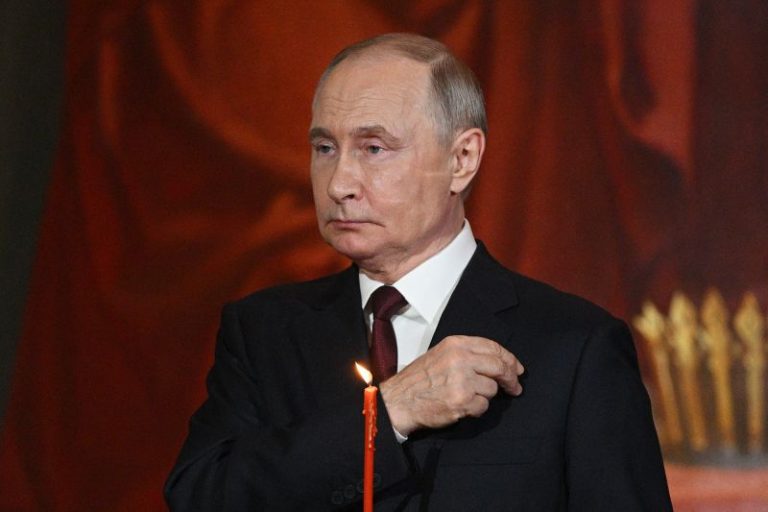It was unexpected, barely implemented and not even extended. But the Kremlin’s hopelessly short-lived Easter truce was aimed directly at US President Donald Trump and at shifting blame for his disastrous peacemaking efforts in the Ukraine war.
When Russian President Vladimir Putin announced a surprise 30-hour ceasefire on Saturday, there was already skepticism in Ukraine and beyond that it was anything more than a cynical public relations stunt amid growing criticism that Moscow had become a foot-dragging obstacle to peace.
But it also revealed that Putin could suspend the conflict at any time, fueling hopes that the short putting down of weapons might be rolled over and become the start of something more substantial, perhaps even creating space for a serious peace process to take root.
Instead, the Easter truce simply expired at midnight on Sunday, exactly when the Kremlin always said it would. Ukraine called on Russia to maintain the ceasefire for longer. But as far as we know there weren’t even talks to extend. For Moscow, it seems, this was never going to be the beginning of the end of the war.
From the moment the guns fell silent — or were meant to — at 6 p.m. Moscow time on Saturday, there were reports of widescale violations on both sides. The Ukrainian military accused Russian forces of launching 2,935 attacks along the vast frontlines, including 1,882 instances of shelling and 96 Russian ground assaults.
But it’s the indignant Russian cries of foul play the Kremlin is gambling Trump will hear loud and clear.
Russian officials alleged nearly 5,000 Ukrainian violations, reiterating that a longer ceasefire, such as the 30 days proposed by Trump and already agreed to by Kyiv but rejected by Moscow, is not viable.
“Ukraine, by not observing the Easter truce proposed by Russian President Vladimir Putin, has shown that it is not capable of ceasing fire even for 30 hours,” said the Russian foreign ministry’s ambassador-at-large for crimes of the Kyiv regime, Rodion Miroshnik, on Kremlin-controlled television on Sunday.
For the Kremlin, this was a goodwill gesture, in the form of a Russian ceasefire, which exposed the Ukrainian leadership, and their European backers, as the real roadblock to a Trump deal.
The White House has repeatedly echoed Kremlin talking points in the past and it may be correct to think it could do so again.
There has been growing unease in Moscow at what could happen if an unpredictable Trump really does walk away from his Ukraine peacemaking efforts, as he has threatened to do if there is not progress soon.
Putin’s biggest concern is that Trump will blame Russia, bolster US support for Kyiv and impose tough new economic sanctions on Moscow, spelling an end to the potential benefits of a reconfiguration of US-Russia relations.
The US remains “committed to achieving a full and comprehensive ceasefire,” a State Department spokesperson said Sunday, after Kyiv accused Moscow of repeatedly breaking the truce.
US Secretary of State Marco Rubio said last week that Washington could end its efforts on ending the Ukrainian conflict within “days” if there weren’t any signs of progress.
Convincing Trump that Ukraine, not Russia, is responsible for any ultimate failure of his peace process is, therefore, an important Kremlin objective and was likely a key reason why the Easter truce was declared.
Before it ended on Sunday night, with the Kremlin explaining that no order was given by Putin to prolong the ceasefire, there were signs Trump remains engaged — for now.
“Hopefully Russia amd (sic) Ukraine will make a deal this week. Both will then start to do big business with the United States of America, which is thriving, and make a fortune,” Trump posted on Truth Social Sunday in capital letters, as he returned from a golf course he owns outside Washington.
The words were upbeat and Trump, for the moment, seems strangely optimistic there can still be a deal, despite the weekend’s dashed hopes of a breakthrough in the Ukraine war.


